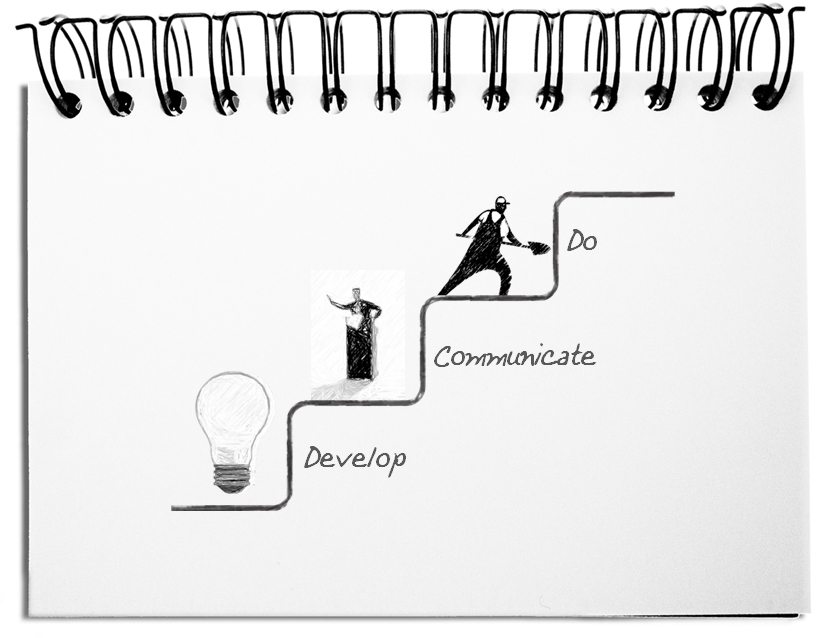A substantial part of the economy, politics and other areasof life is the exchange of information. The biggest mistake is the assumption that a situation is clear per se. On the one hand, due to generalizations, distortions and deletions parts of the message get lost. On the other hand, receivers of the message extend the actual meaning with their own associations and interpretations. Although contents are passed on deliberately, the meaning lies in the eye of the recipients. The path to the message is steep and uncertain. It requires effort and time. There is no guarantee that the desired outcome can be achieved at the target group. Meaning is not simply defined.
For this reason, a good preparation is important. The actual exchange is not limited to the statement, but requires conscious coordination – talks and discussions. Since understanding only becomes visible in doing, meaning design reaches until practical implementation.
Meaning design consists of three steps: developing the idea, exchanging information and the realization in doing. If a step is skipped, the probability of obstacles grows.
Develop
From the idea to the concept, the stability of contents evolves. For this purpose, it is favorable to consider alternative options. In the case of developing ideas, the arguments for the selected solution as well as the counterarguments for the other alternatives arise.
Example: The market for video rentals is breaking down. You develop new business models, in order to stay in business. Alternatives are: starting an on-line business, specializing your offer or giving up the business. You decide for a specialized offer of cultural rare pieces that will be rented and sold nation-wide.
Communicate
From concept to the prepared message to the desired effect, the basis of acceptance is defined. The translation of the abstract concept into the language of the target group is crucial for understanding. Therefore, it is important to know the language and ways of thinking of the target group. In mutual exchange of ideas, the edited message and aspects of the concept are improved. The result is the common understanding.
Example: You visit your branches and present the new concept to your employees. They give you the idea, to add foreign films to your product range that are difficult to obtain. The employees are enthusiastic about your training program that teaches them the new assortment.
Do
From the initial doing to mastery, the desired effect evolves. Not until the message causes an action, it becomes visible, whether the concept functions or not. The involvement of the doers into a regular dialog ensures the desired advantages in the long-term.
Example: After you prepared the market with elaborated advertising for your offer, first issues arise in the support of your knowledgeable customers. With the introduction of appropriate information systems, the employees adjust themselves to the new market. The revenue develops in the desired direction.
Bottom line
The conscious use of meaning design enables the transfer from an old to a new condition. Crucial are the thoughtful concept, the active reconciliation with the involved ones and the continuous improvement of the outcomes.

